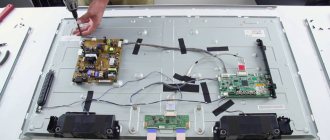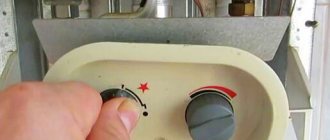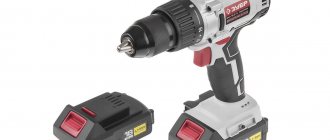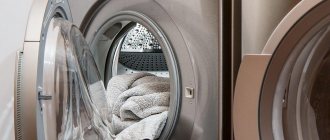Owners of water heaters often encounter such an unpleasant phenomenon as electric shock. Most often, ordinary people have no idea what to do in this situation. Why does a water heater produce electric current, and is a faulty device dangerous? Yes, it's dangerous! Continued operation of the boiler poses a health risk. The owner should call a specialist or replace the device with a new one.
Two types of problems
The boiler is electrified through the body and pipes.
The first thing to do if this rather painful and dangerous problem occurs is to wipe your hands with a dry towel, turn off the power to the device and, if you do not have the skills to repair it, call a person well versed in this issue. Before he arrives, it’s better not to touch the boiler at all and under no circumstances should you try to find out on your own what the cause of the breakdown is - you can only aggravate the situation. But the technician needs to explain exactly how the boiler generates electricity. And he can do this in two ways:
- Through the water.
- Through the body.
When the charge is transferred directly with water, it is detected instantly, anyone can feel it on their own skin. But if it goes to the body, the breakdown may not be detected immediately.
Through the water
You should immediately reassure: despite the fact that the combination of electricity and water sounds quite scary for anyone who is at least a little familiar with the school course in electrical engineering, you should not refuse to install a boiler for this reason. Let us remind you that the device was made with the expectation that it would always have both water and electricity at the same time, which means that the designers took care that even if it was broken it would not kill anyone.
So, you won't be thrown away from the sink while washing dishes or laid unconscious in the bathtub during the evening shower. You may feel an unpleasant tingling sensation when you come into contact with water, and this already indicates that something is wrong with the heater. There can be two reasons for such a breakdown:
- Incorrect connection. Usually this, not even a breakdown, but rather negligence and inattention, is detected immediately after installation. However, there are times when this can happen after some, even a very long time. For example, the use of low-quality wires, or wires of the wrong section. In this case, having exhausted their service life, they will become unusable, and can even lead to short circuits and knocked out plugs. If the master simply made a poor-quality connection, then this problem can be eliminated using a suitable screwdriver.
- Failure of the heating element. Don’t think that after the boiler has been installed and connected, you can forget about it. Like any device, it needs care. Owners who have so-called “hard water” flowing from their taps should especially remember this. It is precisely because of this that scale appears, settling first on the heating device, which leads to its breakdown. Usually the heating element simply refuses to heat the water, but it happens, and not so rarely, that its protective shell is destroyed, exposing the internal spiral to which current is supplied. There is direct contact with water, and it begins to beat with electricity. You can fix the problem by doing the following:
- Disconnect the boiler.
- Drain all the water from it.
- Buy a new heating element, preferably from the same manufacturer.
- Dismantle the failed part. This is not so difficult, since conscientious manufacturers prefer to make boilers in such a way that replacing the heating element is not difficult.
- Install a new one.
- Collect water.
- Turn on the boiler.
There is nothing complicated in this process, but still electricity is not a field of experimentation and if you do not have the skill to work with such devices, it is better to contact a specialist. He will do everything better and give a guarantee for his work.
Through the body
In this case, everything can turn out to be both quite simple and very complicated.
- Simply, in the event that grounding is not carried out or is carried out incorrectly. But it is responsible not only for safety. If the boiler is connected according to all the rules specified in the instructions for use, it will work more economically, without unnecessary waste of electricity, and even scale on the heating element will accumulate much more slowly.
- It’s difficult if some part inside the boiler breaks down. Here you can’t do without a specialist who can carry out high-quality diagnostics and repairs.
Main process
Instructions for connecting the boiler to the electrical network will be provided from the point when the entire heating system is connected to the installation site of the unit. All that remains for you is to hang the water heater on the wall and connect it to the power supply.
Wall mount
Let's consider a more complex option when installing a storage type boiler will be used, because... installation of a walk-through water heater is less labor-intensive (due to the lighter weight and dimensions of the product). First you need to mark the wall in accordance with the placement of the fasteners. To do this, measure the distance required to install the mounting ears and transfer it to the wall. Be sure to use a building level so that the ears are placed strictly horizontally.
Any misalignment will affect the performance of the unit, and therefore its service life and efficiency of use. The tank must be placed perfectly level in both horizontal and vertical planes.
After marking, take a drill, drill holes in the wall and drive dowels into them. Next, we screw the anchor hooks into them and hang the boiler on the wall, as shown in the photo below.
Don't worry about decorative wall decoration. Even if renovations have already been made in the apartment, with careful installation you will not damage the surface. You can also see detailed instructions for installing and connecting a wall-mounted boiler in the video example:
How to install a water heater on a wall
Connecting wires
Once the water heater is securely mounted on the wall, you will need to install the electrical wiring to it yourself. Let's consider two existing options for connecting wiring from the meter.
Option 1 - Powered from a wall outlet
This option is used if the unit power does not exceed 3.5 kW. In this case, it is necessary to connect the socket to the place where the boiler is connected to the electrical network, as shown in the diagram above. The minimum cable cross-section should be 2.5 mm2. (copper conductors). It is recommended to calculate the cable cross-section in advance so that it can withstand the resulting loads.
Option 2 - Power from the shield
If you purchased a device with a power of more than 3.5 kW, it is prohibited to use power from the outlet, because it simply will not withstand such a load. In this case, it is necessary to connect the cable to the water heater directly from the electrical distribution panel installed in the apartment or house.
Please note that the boiler can be connected to a single-phase network if its power is no more than 4 kW. If the rated power is higher, the network must be three-phase (voltage 380 Volts)
After you decide on how to connect the boiler to electricity, you need to power the device yourself and move on to the next step. The video below discusses various water heater connection diagrams:
Electrical installation diagrams
Setting up protection
Since when creating a heating system you will be dealing with powerful equipment, as well as the close location of water and current, you need to take care of protecting the boiler and yourself.
First of all, you need to connect the RCD and circuit breaker to the line that will serve the unit. If the power will be supplied from an outlet, it is recommended to install protective equipment on the distribution panel. In the event that the power will come directly from the shield, the protection devices must be located near the object itself so that it can be conveniently and safely serviced. Do not forget that when placing RCDs and AVs close together, it is necessary to ensure that the devices are protected from moisture. To do this, it is recommended to place the products in a sealed box.
In a 220 V network, it is necessary to connect the electric boiler through a two-pole circuit breaker
Remember an important rule - the automation is installed with the upper connection of the input phase and zero
First start
When all electrical installation work is completed, you should proceed to starting up the equipment. The first step is to check all connections of wires and pipes for integrity and tightness. If no abnormalities are detected, you can proceed to turn on the power supply. To do this, first open the valves on the pipes (cold and hot circuit), after which you can turn on the machine and the RCD. We strongly recommend watching the video instructions, which clearly explain the entire process:
Video lesson: connecting an electric boiler to the network and pipeline
https://youtube.com/watch?v=3MPlGi1Zqss
RCD installation
Residual current device
The conscientious technician whom you called to install a water heating boiler will definitely advise you to install an RCD (residual current device). This is a small device that is placed directly into the panel and is responsible for ensuring that your boiler does not shock you. That is, if problems arise, it will simply turn off the electricity supply, which will save you from troubles and the boiler from more severe breakdowns. Installing an RCD does not take very much time and does not take a lot of money, but the device is very useful, and in matters related to electricity, there is no need to waste time on trifles or even save money.
These are all the reasons why a water heating device may not work correctly, causing its owners tangible troubles on the skin. We also told you what to do in these cases and how to eliminate them. I would like to remind you of only one thing: electricity and water are a very dangerous connection and if you do not have the skills to work with them, it is better to call an electrician.
What to do if the boiler is electrocuted
Sometimes it happens that the water heater emits an electric current through the water or the housing. Most people get lost in this situation and don't know what steps they should take next. Let's look at this issue in detail and understand what needs to be done to solve the problem.
The first step is to accurately determine the cause of this problem. Experts emphasize that if the device produces electric shock, then its further operation poses a danger to life and health. Therefore, it is best for the owner of a faulty water heater to call an experienced technician to repair his device in order to understand why the boiler is electric when turned on.
Is it possible to repair a water heater yourself? Yes, this is possible, but independent repairs must be carried out in compliance with safety precautions, because electric current is extremely dangerous. Below we will discuss possible ways to solve the most common problems that you can cope with on your own.
There is no or poor contact on the grounding, grounding in the shield
Often, even in newly built houses with 3-wire cable lines, a situation occurs when there is a small voltage within a few tens of volts on the grounding conductor, and accordingly on everything to which it is connected.
It seems that the wiring in the apartment is new, and everything is assembled in junction boxes according to the diagrams with respect to “polarity,” but electric shock occurs everywhere you don’t touch.
The explanation may be very simple. In the apartment panel, all grounding wires are collected in a heap and connected to one common bus.
But it is just neither grounded nor zeroed! The electricians simply forgot to do this. This is where all the problems come from.
Or there is a break somewhere in the main ground wire from the circuit to your panel. Check the voltage in the panel between the ground bus and the phase. It should be stable around 220V. If the voltage “floats” in absolutely arbitrary parameters, then there is clearly a break somewhere.











